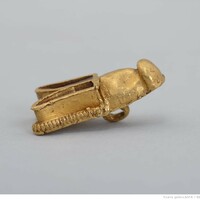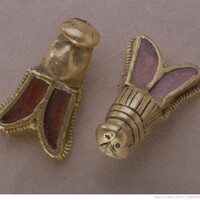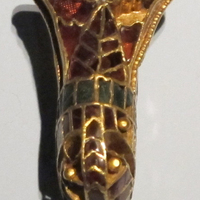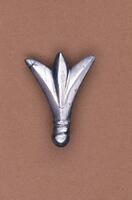Cicada ornaments
Date:
Fifth century
Location or Findspot (Modern-Day Country):
Hungary,
Belgium,
Romania,
Ukraine,
San Marino
Description:
During Late Antiquity and the early Middle Ages, the Huns migrated westward across the Eurasian Steppe, a vast grassland from the Danube to Mongolia. The steppe was home to different groups of nomadic peoples, some of which were closely related to the Huns, among them the Xiongnu, whose territories included Mongolia and parts of northern China. As the Huns traveled west, so too did cicada brooches and ornaments, which they introduced to other nomadic groups and eventually to Europe. In Chinese culture, which would have influenced the Xiongnu (and, in turn, the Huns), cicadas were associated with rebirth and immortality as well as high status. The fifth-century cicadas found in Eastern, Central, and Western Europe likely carried similarly protective associations for high-ranking individuals. Hunnic cicada ornaments were often rendered in gold and decorated with garnet inlays, a combination that can also be found in the cicadas (sometimes identified as bees) found in modern-day Belgium in the tomb of Childeric I (d. 481), the first known Merovingian king.
Relevant Textbook Chapter(s):
2
Repository and Online Resources:
• Explore a 3D model of cicada brooches found found at Györköny (Hungary) on the shoulders of a skeleton.
• Explore a 3D model of a cicada brooch found at Sáromberke (Romania).
• Read about cicadas is ancient Chinese art.
Image Credits:
Wikimedia Commons; © The Trustees of the British Museum









